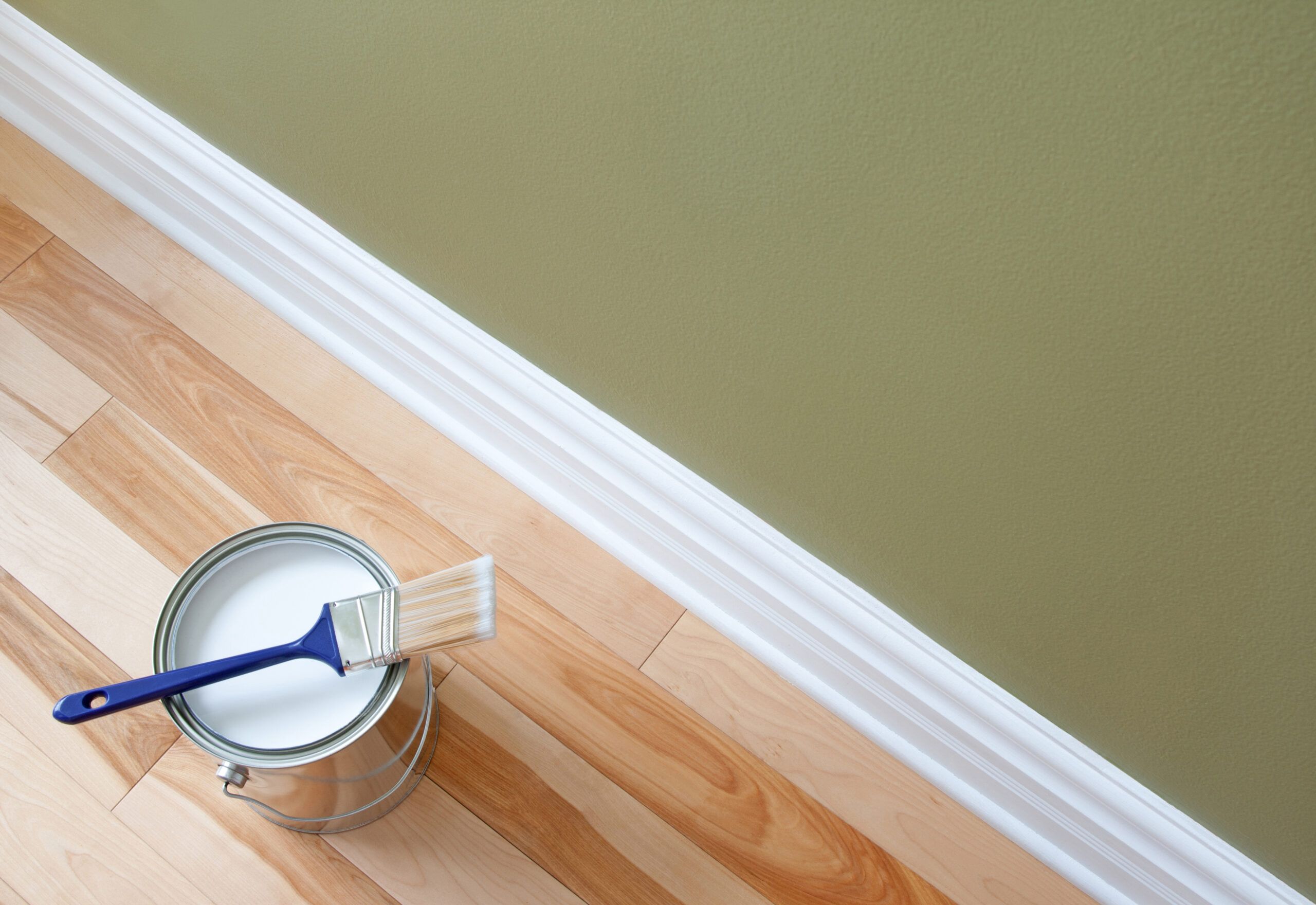Baseboards, otherwise known as the wall trim or molding found along the floor of a room, can easily get dingy and scuffed up due to their proximity to the ground and all the grime that accumulates there.
Best Paint to Use for Baseboards
Start by selecting either oil-based or water-based paint. Oil-based (alkyd) paint tends to hold up well and requires only one coat, while water-based (latex) paint is less toxic and dries more quickly. For most DIYers, water-based is probably the better bet, as it’ll be easier to clean up any errant paint.
With both paint options, there are different gloss levels to choose from. For baseboards, opt for semigloss, which is more damage-resistant and easier to keep clean.
Selecting a sheen that’s higher in gloss than what’s on the walls has the added benefit of helping to showcase the molding.
Paint brushes and Other Materials
If you’re going with water-based paint, select a nylon or poly-nylon combination brush to apply it. With oil-based paint, use a natural-bristle brush. A 2 to 2½-inch angled brush is a good option for painting baseboards.
For this project, you’ll also need a drop cloth or plastic sheeting, a vacuum, a damp cloth, painter’s tape, and a putty knife. Depending on the condition of your baseboards, you may also want to have spackling materials and sandpaper on hand.
Steps for Painting Baseboards
Step 1: Prep the area
- Begin by laying down a drop cloth or taping down plastic sheeting in the room to protect the floor.
- Take a look at the baseboards to see if there are any noticeable nicks or large dings. Scrape away any loose, flaking paint and repair gouged-out areas with a spackling compound, and then sand the area smooth with a fine-grit sandpaper.
- Vacuum the baseboards and adjacent flooring and use a damp cloth to wipe down the baseboards, removing all the dust and dirt. Let the area dry completely before continuing.
Step 2: Adhere painter’s tape
Painter’s tape should be applied along both edges of the baseboard—where it meets the wall, and where it meets the floor. If you’re concerned about getting paint on the wall, select a wider tape. Get the tape as close to the trim as possible, without overlapping it.
Got wall-to-wall carpet? The trick is to get the tape between the baseboard and the carpet. First, make sure the tape is able to adhere to the carpet properly, without furling up.
Then, as you’re applying the tape, leave about a quarter-inch of it beyond the edge of the carpet, so it covers the baseboard slightly—but don’t stick it on the baseboard. Using a putty knife, push the tape down, tucking it into the crevice between the wall and the edge of the carpet.
Step 3: Start painting
Make sure the paint in the can is thoroughly stirred before you begin.
- To load the paintbrush, cover the bristles about halfway, then gently tap them against the inner lip of the can to remove any excess paint.
- The best place to start painting the baseboards is in a corner of the room. Work your way around the perimeter in one-foot sections. Go horizontally, following the length of the trim, rather than brushing up and down.
- Apply your strokes in a single direction, rather than brushing back and forth. To prevent lap marks, paint over the edges of previously painted areas before the paint dries.
- If the molding has intricate contours, make sure you push the paint into the recessed areas. If paint drips or accidentally gets onto the wall or floor, quickly wipe it up with a damp cloth before it has a chance to dry.
- Let the paint dry for at least a day. It should feel dry to the touch by the next day.
If you’re using a high-gloss, water-based paint, apply a second coat (and, if necessary, a third one), allowing the paint to dry for at least a day between each layer.
Prior to applying these extra coats, you may want to lightly scuff up the painted surface with sandpaper to give it some texture, which will help the new layer of paint adhere better. Just make sure you remove all the sanding dust from the area before applying each new coat.
Step 4: Remove the painter’s tape
After the paint has dried, it’s time to remove the painter’s tape. Make sure the room isn’t overly cold or warm when you do this, as chillier temps may render the tape brittle and difficult to remove, and excessive heat may cause the tape’s adhesive to leave a gummy residue on the wall.
- To avoid cracking the paint or having it get pulled up along with the tape, hold the blade of a putty knife flat against the wall, slip it under the tape, and run it along the edge to separate the tape from the paint, taking care to not scratch the wall.
- Then pull the tape back at a 45-degree angle, working slowly and steadily, to reveal a neat line.

